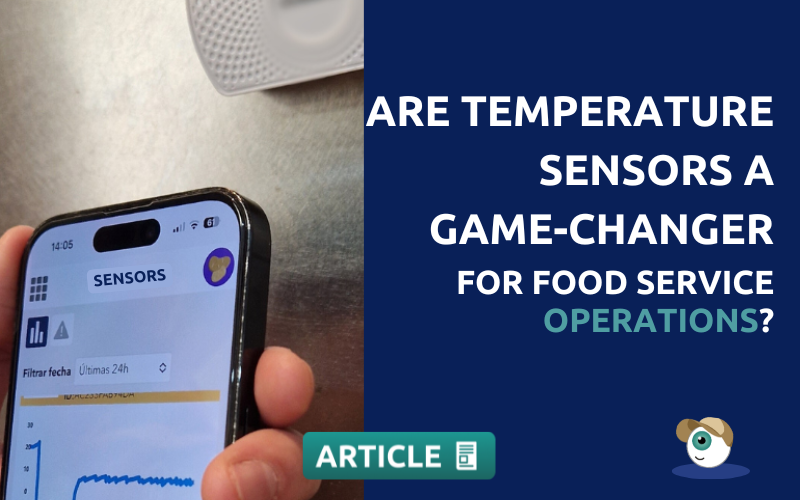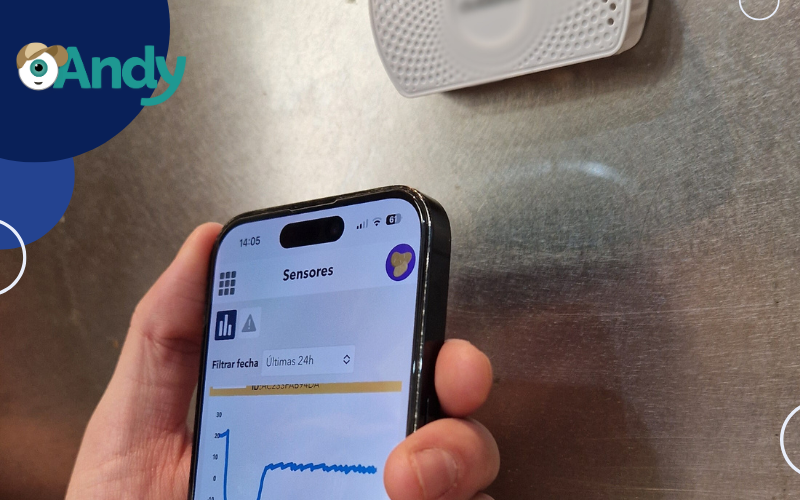Are Temperature Sensors a Game-Changer for Food Service Operations?

In a market where a single mistake in a professional kitchen can ripple across operations, safeguarding food quality and safety isn’t just a checkbox—it’s the foundation of lasting success.
But as operational challenges grow and compliance standards tighten, is adopting advanced technology like temperature sensors a luxury? Or are they an essential tool for ensuring efficiency, consistency, and trust?
Let’s explore how this technology is shaping modern food service operations and why it could redefine the way your business operates.
Why Temperature Matters: The Foundation of Food Safety
Temperature is the backbone of food safety, affecting everything from compliance to customer satisfaction.
Here’s why it’s a non-negotiable:
1/ Health Risks: Pathogens such as Salmonella and E. coli thrive in the “danger zone” of 4°C to 60°C. The FDA warns that bacteria can double every 20 minutes under these conditions, turning safe food into a potential health hazard.
2/ Operational Setbacks: Improper temperature management isn’t just dangerous; it’s expensive. Food spoilage, contamination, and recalls can cause financial losses and disrupt operations.
3/ Customer Trust: In a survey by the International Food Information Council, over 70% of consumers cited food safety as a top priority. Consistently ensuring proper temperature control builds trust and reinforces brand loyalty.
The Hidden Costs of Manual Temperature Monitoring
Many food service businesses still rely on manual temperature checks, a method prone to human error and inefficiency.
The drawbacks are significant:
1/ Inaccuracies: Staff may misread thermometers or forget to record data during busy shifts.
2/ Resource-Intensive: Manual processes take time, diverting employees from customer-facing roles.
3/ Compliance Challenges: Incomplete or inconsistent records can lead to fines during audits or inspections.
As we’ll see, the cost of these inefficiencies often outweighs the investment in modern technology.
How Temperature Sensors Elevate Food Service Operations
Unlike manual methods, temperature sensors provide a seamless and automated solution:

1/ Real-Time Monitoring
Smart sensors continuously track temperatures in storage units, cooking appliances, and transport vehicles, sending instant alerts if levels deviate from safe ranges.
2/ Data-Driven Insights
Sensors integrated with platforms like Andy centralise data across locations, offering actionable insights to optimise operations and minimise risks.
3/ Enhanced Efficiency
Automating temperature checks frees up staff, allowing them to focus on delivering exceptional customer experiences.
Temperature Sensors: Breaking Down the Investment
Modern temperature sensors are more accessible than ever, with flexible pricing models to suit businesses of all sizes:
1/ Initial Hardware Costs: Ranges from €100 to €300 per sensor, depending on features like Wi-Fi connectivity or Bluetooth integration.
2/ Software Subscriptions: Advanced platforms like Andy’s start at €250 annually, offering comprehensive monitoring and reporting tools.
3/ Maintenance and Installation: One-time setup fees typically range from €300 to €1,000.
The ROI of Temperature Sensors: Proven Benefits
Investing in sensors isn’t just about compliance—it’s a strategic move with measurable returns:
1/ Reduced Waste: Businesses using sensors report up to a 30% reduction in food waste, saving thousands annually.
2/ Lower Labour Costs: Automating temperature monitoring can save hours of manual labor each week.
3/ Compliance Confidence: Avoiding even a single regulatory fine (often upwards of €10,000) can justify the investment.
Andy + Temperature Sensors: Transforming Food Safety Culture
Beyond operational gains, temperature sensors play a pivotal role in fostering a proactive food safety culture.

With tools like Andy:
1/ Accountability: Staff gain clear visibility into compliance metrics, reinforcing best practices.
2/ Team Engagement: Real-time alerts and intuitive dashboards make safety protocols easier to follow, reducing fatigue and boosting morale.
3/ Leadership Confidence: Centralised oversight allows managers to identify trends and address vulnerabilities swiftly.
Ready to elevate your food service operations with cutting-edge temperature sensors?
Find out how the industry’s leading brands already trust their food safety and kitchen operations to Andy.
Transform your kitchens into hubs of efficiency and safety with Andy’s Temperature Sensors and other food safety and operations advanced solutions.


